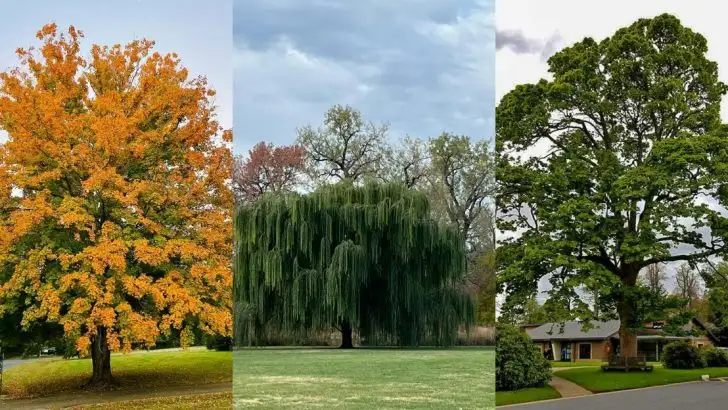Some trees in your yard are undercover villains, turning your prized lawn into a chaotic mess. They send their roots charging like tiny invaders, swallowing water and nutrients while leaving your grass gasping for air. Imagine gazing at your once-pristine turf only to find uneven patches and crumbling beauty. That’s the work of aggressive trees that bully your landscape. Now picture a gentle giant that provides the perfect dose of shade and companionship, letting your lawn grow lush and lively. In this guide, meet five trees notorious for wrecking lawns over time and five that treat your yard like a cherished friend. These standout species make all the difference in whether your outdoor space feels wild and unkempt or calm and inviting. Ready to choose wisely for your garden? Let’s explore which trees deserve a spot in your yard and which ones must be shown the door.
Silver Maple
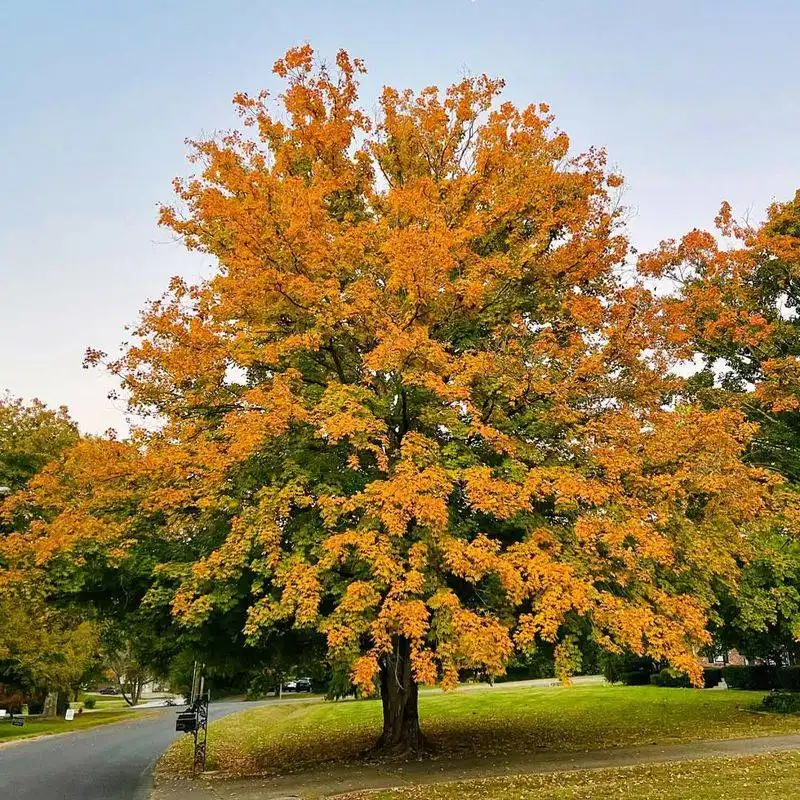
The Silver Maple, with its shimmering leaves, brings a cool respite on hot days. Yet, beneath its beauty lies a problem. Its roots stretch far and wide, often surfacing to disrupt even the most well-maintained lawns. This vigorous growth can lead to cracked pavements and uneven grass patches. Lawn enthusiasts find themselves constantly battling its invasive nature. Interestingly, this tree grows rapidly, which is both a blessing and a curse. While it provides quick shade, it overshadows grass, starving it of sunlight and nutrients. Regular maintenance becomes a necessity.
Willow Tree
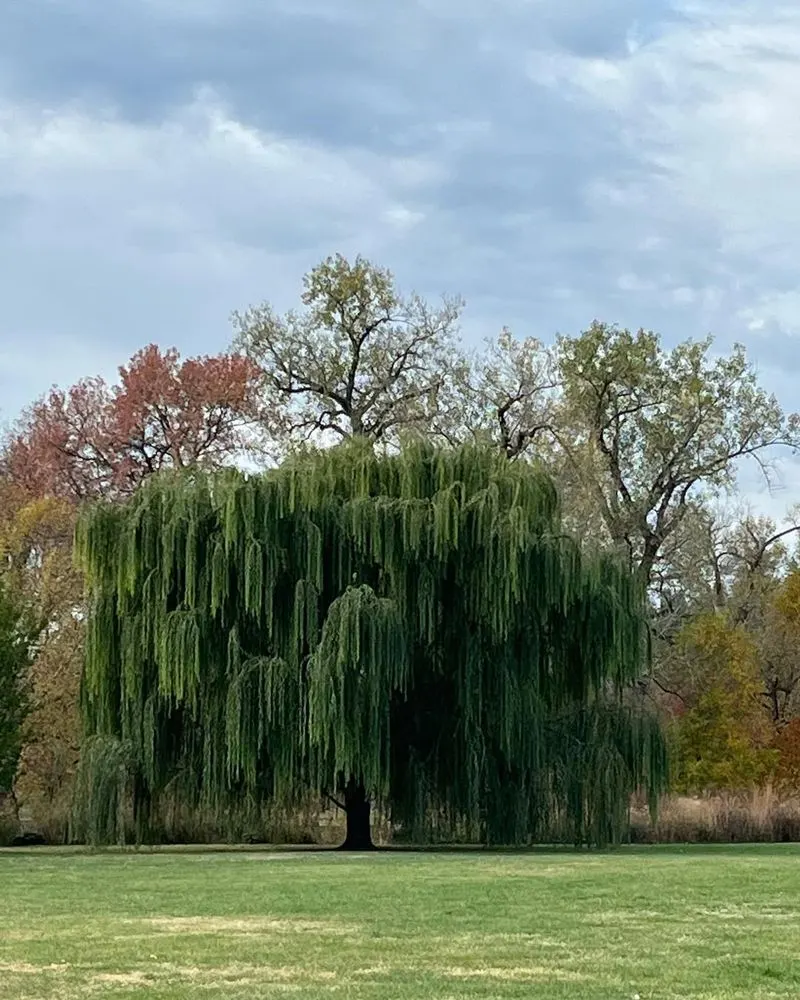
With its graceful draping branches, the Willow Tree paints a romantic picture. However, it thirsts for water, extending its roots far in search of it. This relentless quest often leads to encroachment on lawns and gardens, leaving dry, choked patches in its wake. The moisture-seeking roots can also damage underground pipes, turning a serene landscape into a maintenance dilemma. Despite its challenges, the Willow’s presence by water bodies can be enchanting. Gardeners often weigh its aesthetic appeal against the potential havoc it wreaks on lawns.
Sycamore
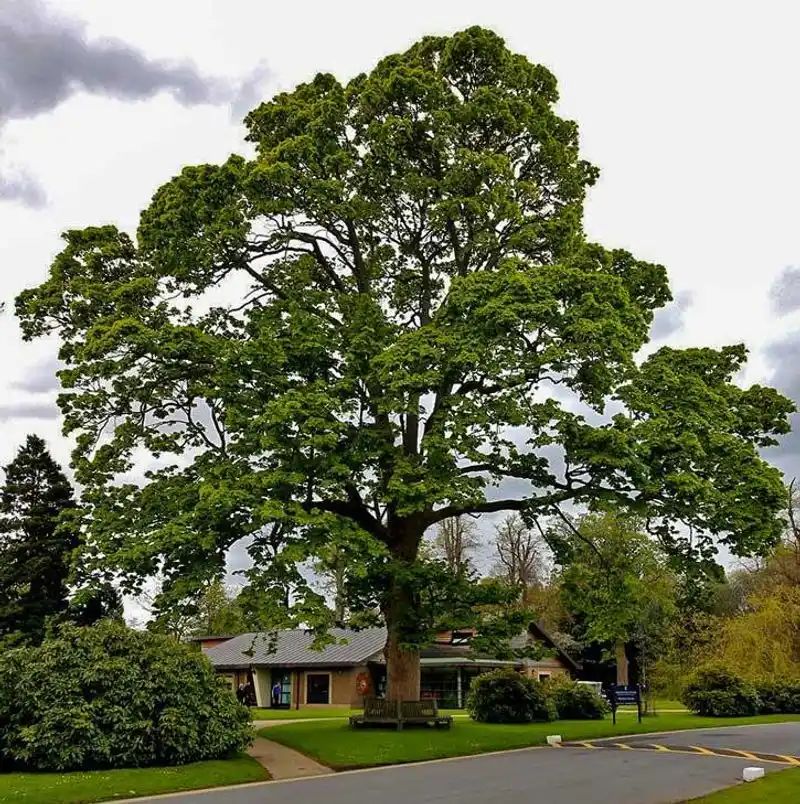
Majestic and towering, the Sycamore stands as a testament to nature’s grandeur. Yet, its roots know no boundaries. They invade lawns, lifting soil and disrupting the grass’s growth. This intrusion often results in an uneven lawn surface, making mowing a tricky task. Despite its imposing presence, the Sycamore demands space, both above and below ground. Homeowners frequently find themselves at odds with its expansive reach. However, its mottled bark and broad leaves remain a favorite among those seeking a statement tree.
Norway Maple
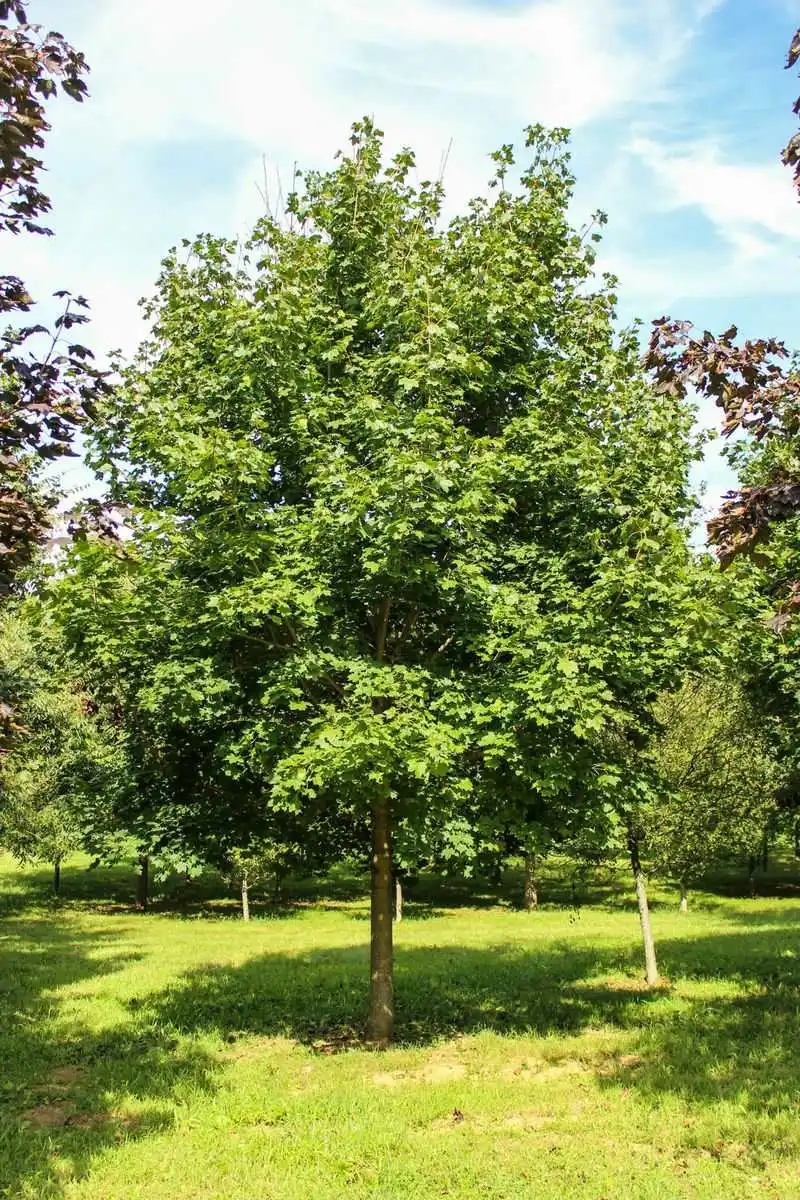
The Norway Maple offers dense foliage that provides consistent shade. While this might seem advantageous, it poses a problem for lawns beneath. The dense canopy blocks sunlight, depriving grass of the essential light it needs to thrive. Additionally, its roots compete fiercely for nutrients, leaving little for surrounding vegetation. Homeowners often notice grass thinning and bare patches forming. Despite these challenges, the Norway Maple’s vibrant fall foliage draws admirers. Balancing its beauty with its impact on lawns is a common homeowner dilemma.
Sweetgum
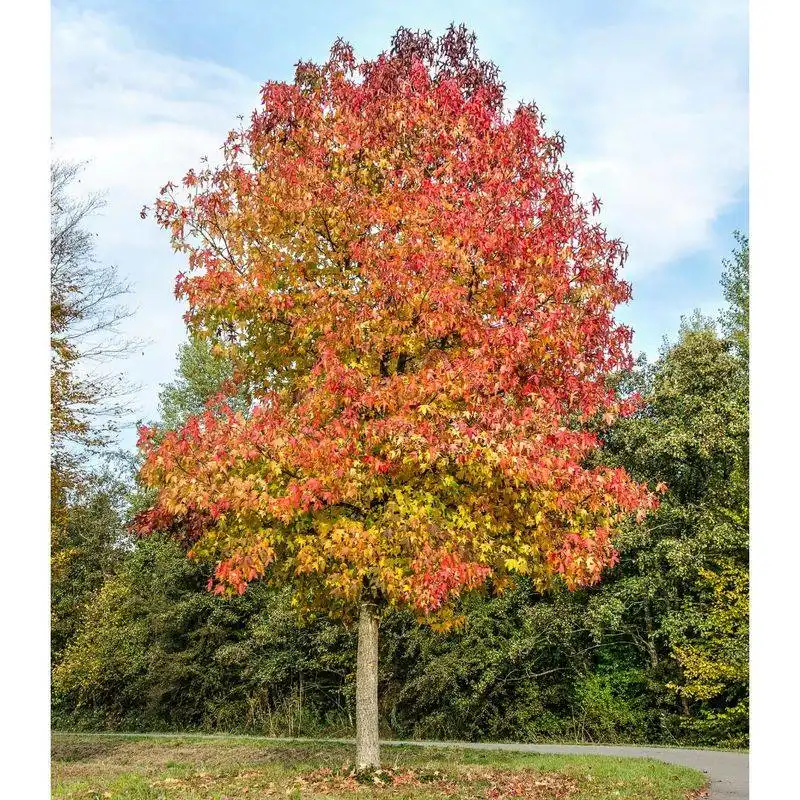
Known for its star-shaped leaves, the Sweetgum’s beauty is undeniable. However, it’s infamous for its gumballs—spiky seed pods that litter lawns. These pods become a nuisance, especially when mowing or walking barefoot. The tree’s shallow roots further complicate lawn maintenance, often surfacing and disrupting the grass. Despite its drawbacks, the Sweetgum’s vibrant autumn colors make it a staple for those seeking seasonal splendor. Many gardeners find themselves torn between managing its mess and enjoying its beauty throughout the year.
Japanese Maple

The Japanese Maple, with its delicate leaves and vibrant hues, is a landscaper’s delight. Unlike its more aggressive relatives, it poses little threat to your lawn. Its non-invasive roots allow grass to flourish without competition. This compact tree offers a splash of color, making it perfect for small gardens and yards. It thrives in partial shade, ensuring that nearby grass receives ample sunlight. Those seeking an elegant, low-maintenance addition to their garden often choose this tree. Its aesthetic appeal is matched by its lawn-friendly nature.
Dogwood
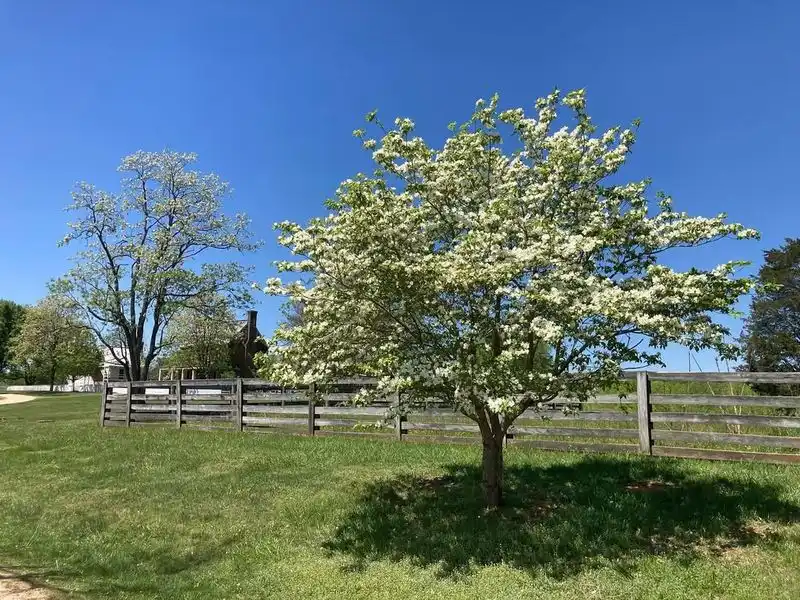
Celebrated for its stunning spring blossoms, the Dogwood is a true garden gem. Its roots are modest, allowing it to coexist harmoniously with lawn grass. This tree offers a seasonal show of colors, transitioning from vibrant greens to fiery reds in autumn. Unlike more dominant species, the Dogwood doesn’t overshadow its surroundings. Its manageable size and appealing flowers make it a popular choice for home gardens. Those looking for a tree that complements rather than competes with lawn space often choose Dogwood for their landscape designs.
Redbud
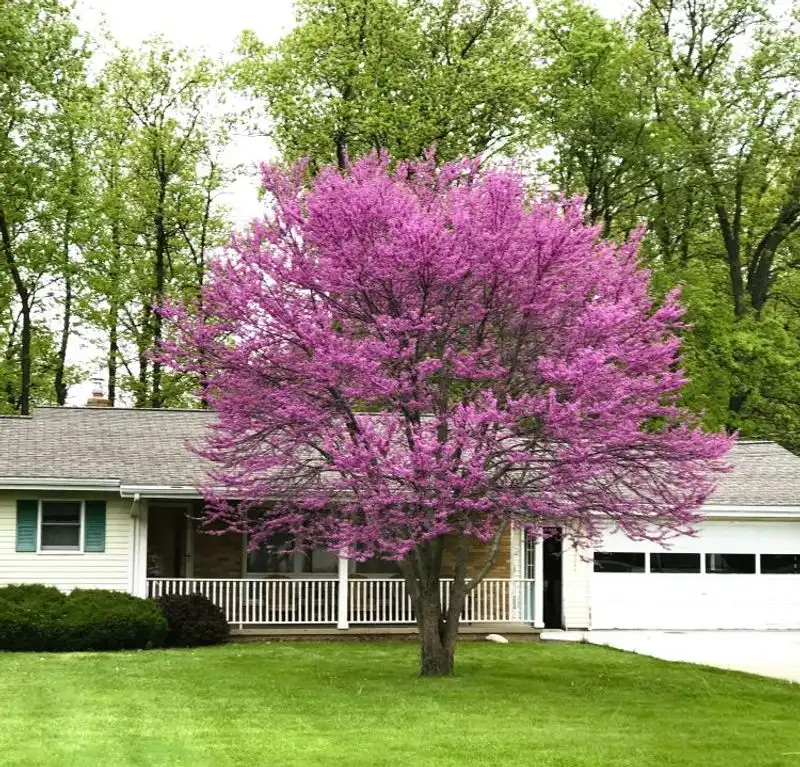
With heart-shaped leaves and charming pink flowers, the Redbud brings a touch of whimsy to any garden. Its compact size and non-invasive roots make it a perfect companion for lawns. This tree thrives in a variety of conditions, adapting well to different climates. As seasons change, the Redbud offers a captivating display of colors, ensuring year-round interest. Gardeners appreciate its low-maintenance nature, enjoying its beauty without the hassle. For those seeking a tree that adds character without overshadowing the lawn, the Redbud is a choice worth considering.
Magnolia
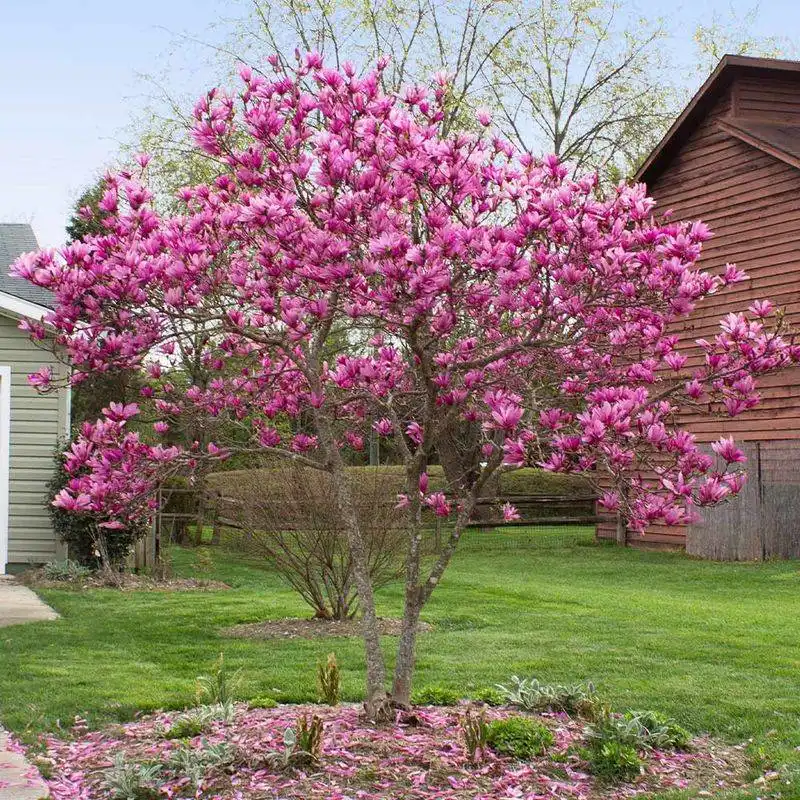
Magnolias, with their large, fragrant blooms, are a classic choice for lawn lovers. Their roots grow deep rather than wide, minimizing competition with grass. This allows for a pristine lawn under its elegant canopy. Magnolias thrive in moist, well-drained soil, making them suitable for various landscapes. While their flowers are the main attraction, their foliage offers year-round beauty. Gardeners seeking a focal point in their landscape often turn to Magnolias. Their harmonious relationship with grass makes them a beloved choice for lawn-friendly gardening.
Amelanchier
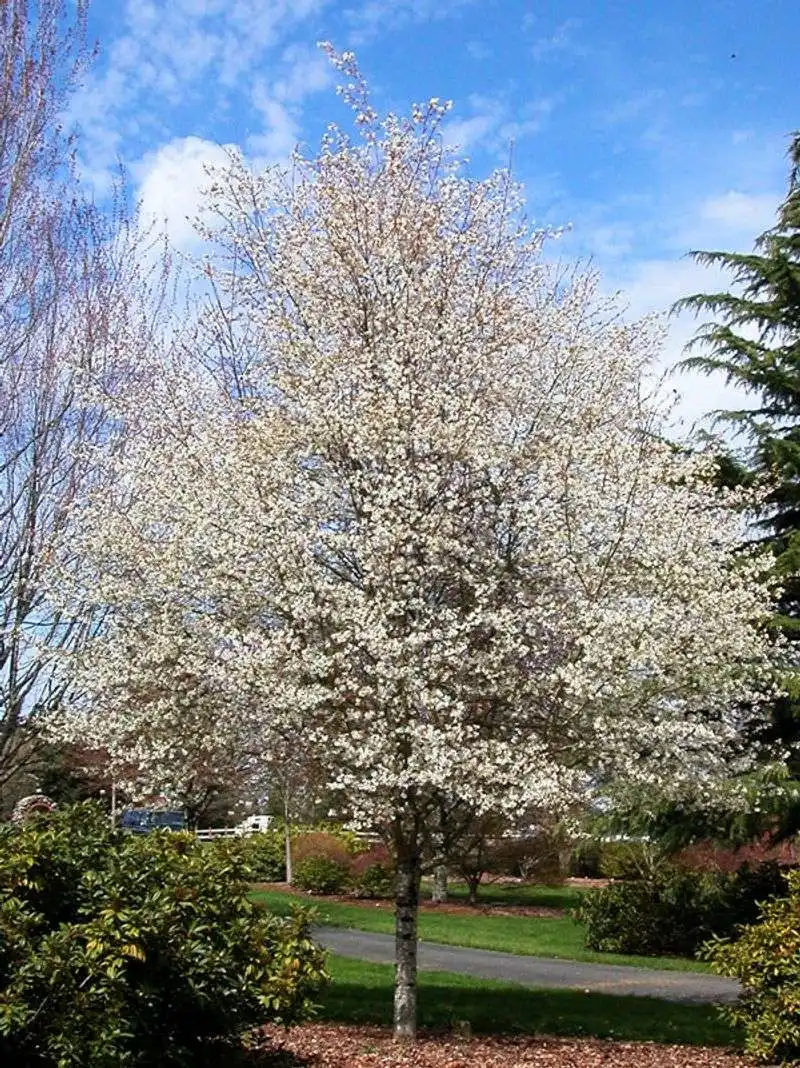
Also known as Serviceberry, the Amelanchier is a versatile tree that enhances any lawn with its beauty. Its delicate white blossoms in spring give way to small, edible berries. The Amelanchier’s roots are non-invasive, allowing grass to grow undisturbed. This tree is adaptable to different soil types, thriving in both sun and partial shade. Its multi-seasonal interest ensures it remains a focal point throughout the year. Homeowners seeking a tree that offers both aesthetic appeal and lawn compatibility often choose the Amelanchier for their outdoor spaces.

